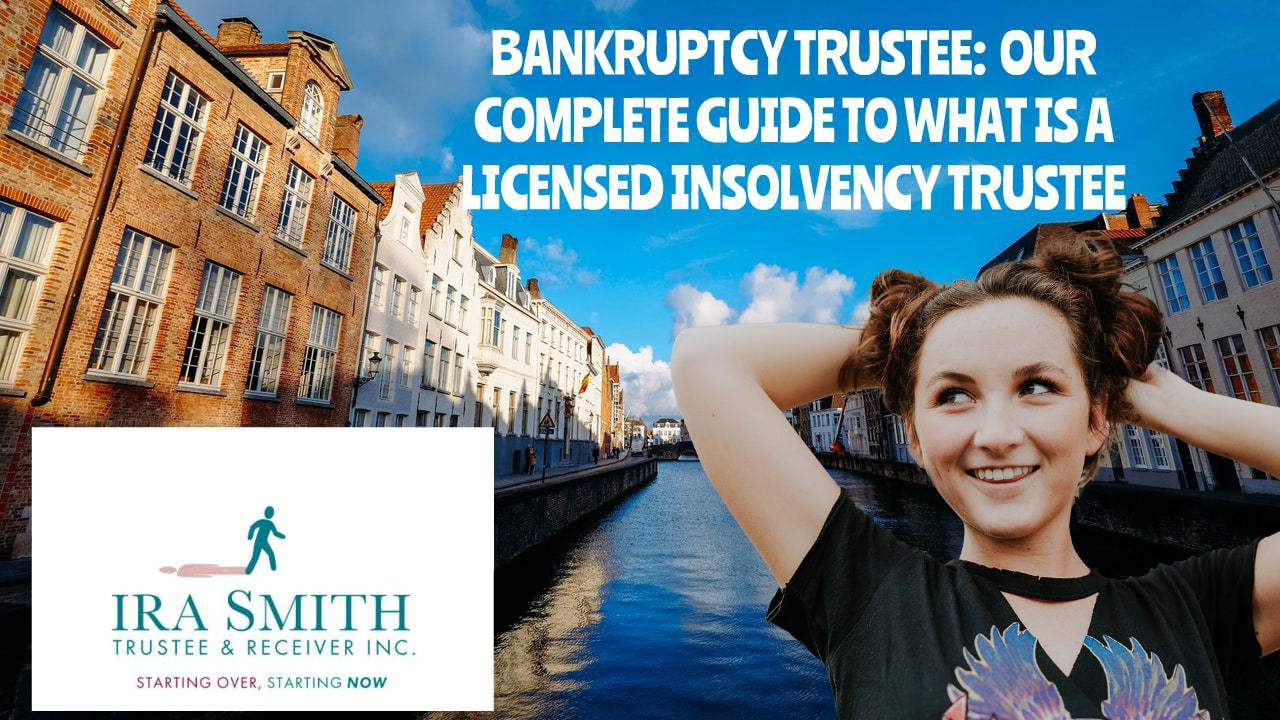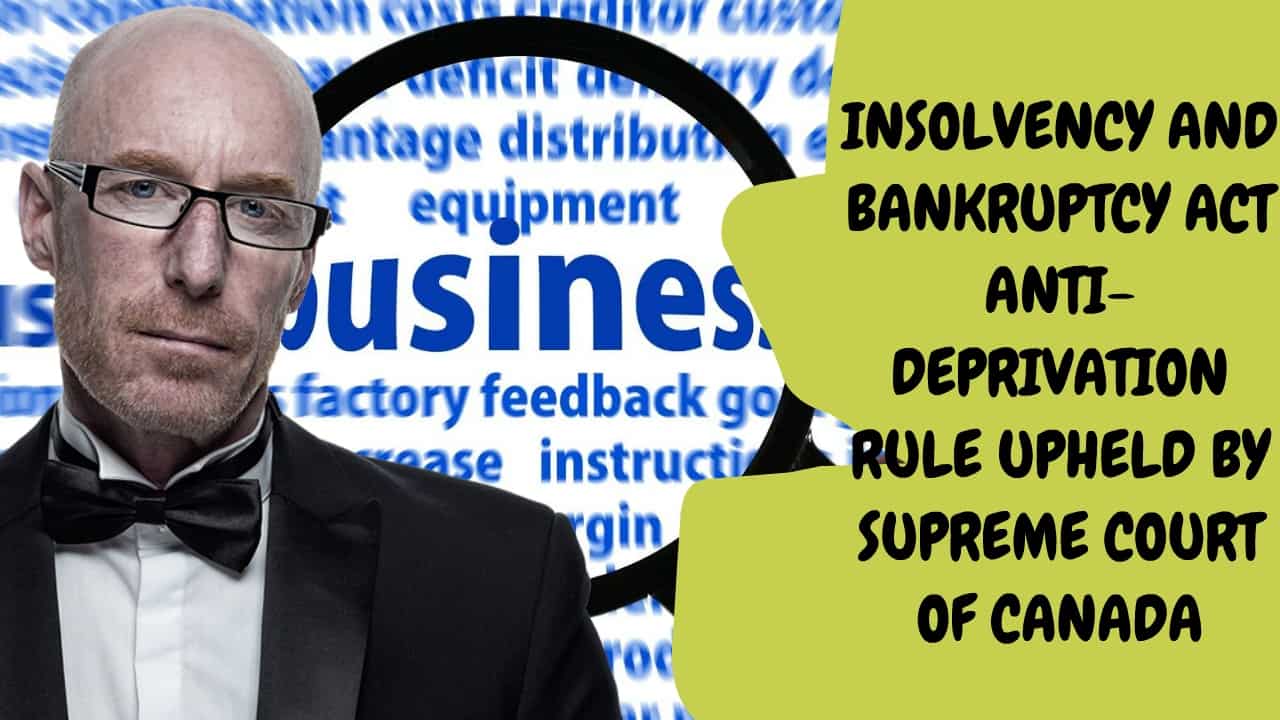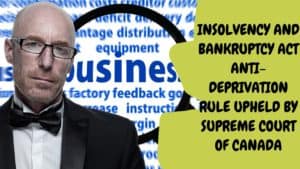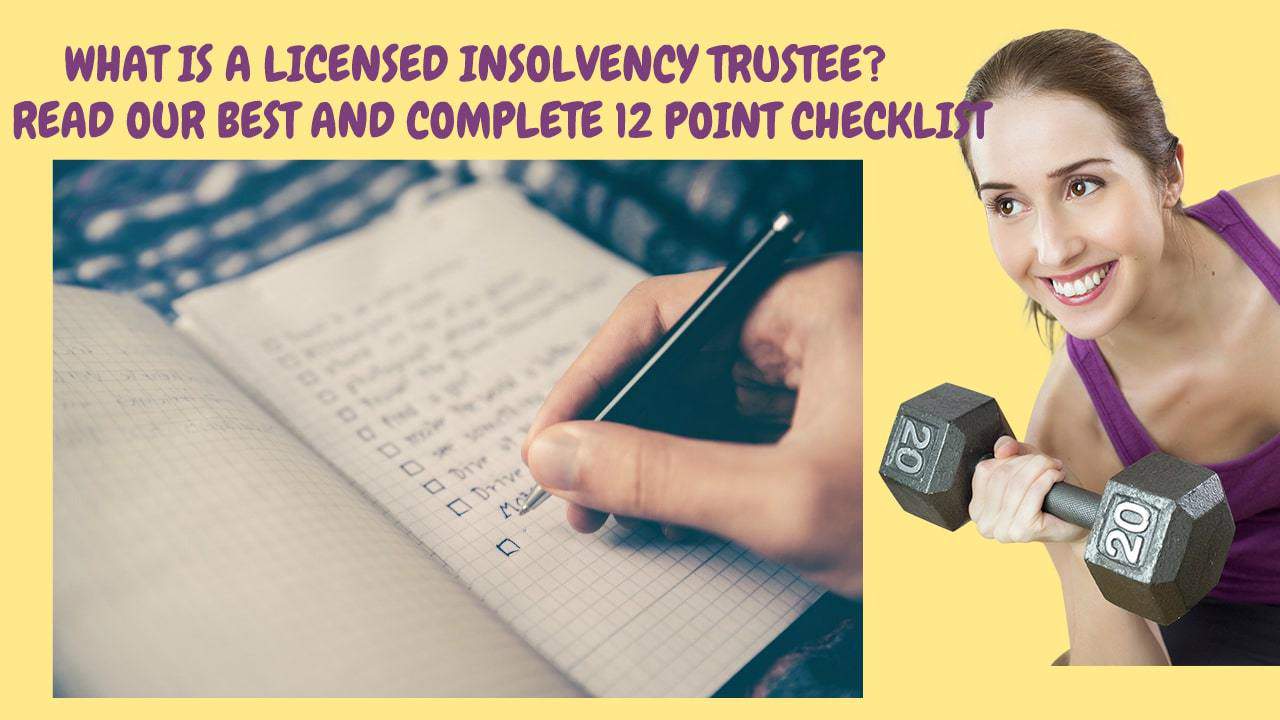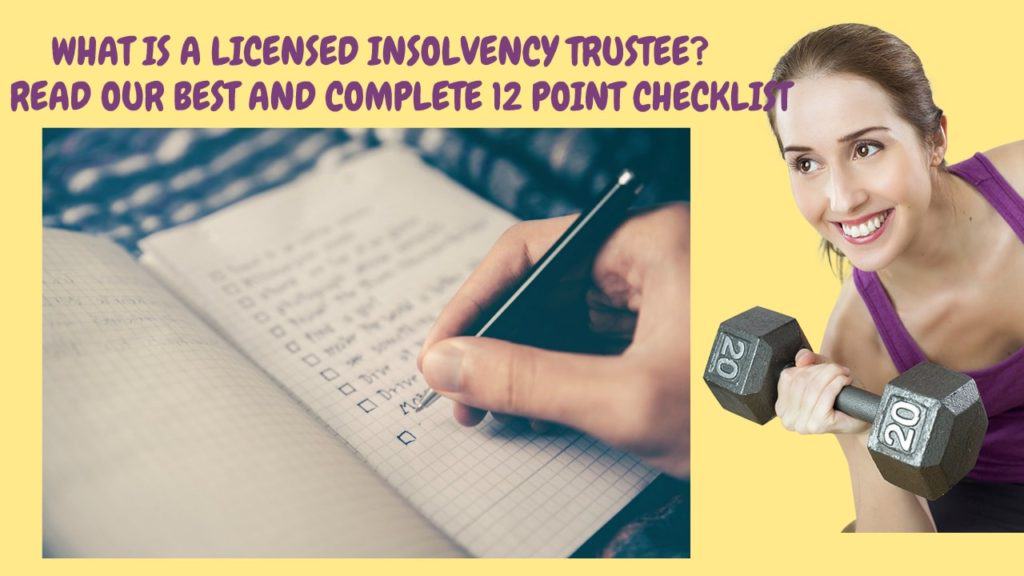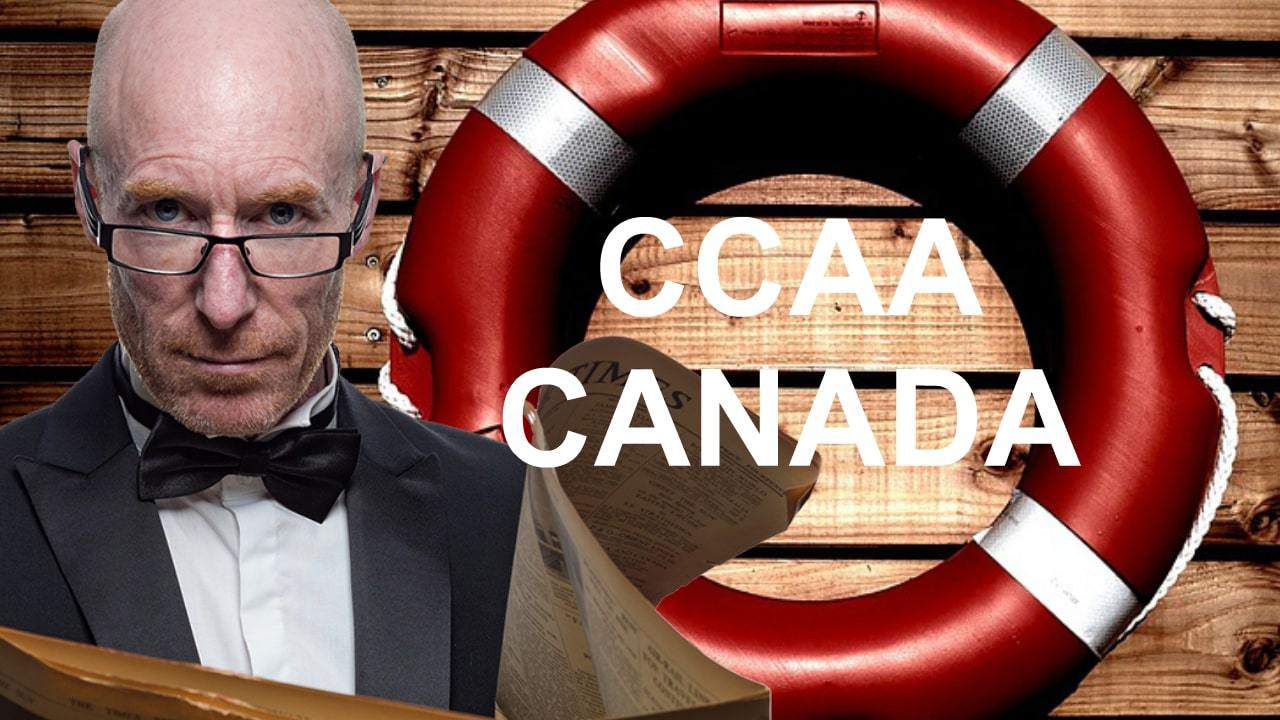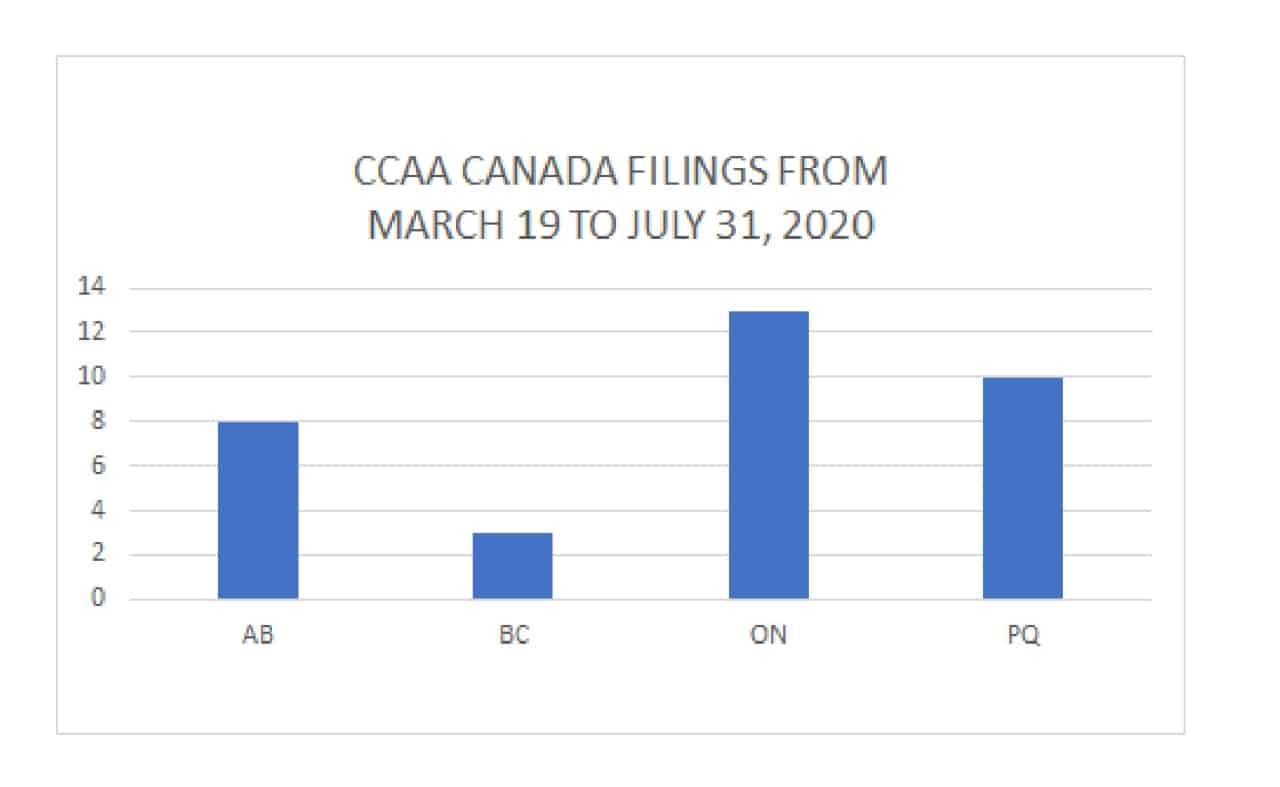The Ira Smith Trustee Team is absolutely operational and Ira, in addition to Brandon Smith, is readily available for a telephone consultation or video meeting. We hope that you and your family are safe and healthy.
Licensed Insolvency Trustees, licensed by the Canadian Government
A bankruptcy trustee (now called a Licensed Insolvency Trustee) is a person or company licensed to administer receiverships, bankruptcies, and proposals in Canada. We are licensed by the Office of the Superintendent of Bankruptcy Canada (OSB).
The role of the bankruptcy trustee is to help people and companies look at their financial situation and explore the various debt relief options. The Trustee can help with many possible debt solutions; much more than just filing bankruptcy. The Trustee looks at various ways the person or business can avoid bankruptcy first. Bankruptcy, which is the legal process for debtors to deal with their unsecured creditors, by discharging away their unsecured debt, including credit card debt and income tax debts, is the last resort.
In this Brandon’s blog, I provide my complete guide on how a bankruptcy trustee helps people and companies who are in a precarious financial situation because they have too much debt by providing insolvency services and helping people and companies through the Canadian insolvency process.
About Bankruptcy Trustees: what is a licensed insolvency trustee?
A Licensed Insolvency Trustee (LIT) is federally certified by the OSB. A trustee in bankruptcy is the old name for a LIT. LITs are the only debt professionals who are federally regulated and supervised professional that offers recommendations and solutions to individuals and businesses with financial problems.
LITs help people make informed choices to manage their debt difficulties. A bankruptcy trustee is the only expert licensed to carry out government-regulated insolvency proceedings such as:
- privately-appointed or court-appointed receiver or receiver and manager to administer receiverships Bankruptcy and Insolvency Act Canada (BIA).
- assisting people to restructure through consumer insolvency using a consumer proposal.
- helping people who owe more than $250,000 (not including debts registered against their principal residence) and companies by making a proposal to creditors as alternatives to bankruptcy.
- bankruptcy trustee/licensed insolvency trustee in a bankruptcy administration when a person or company is filing for bankruptcy.
As licensed insolvency trustees, we’re here to help: How do I become an insolvency trustee?
A person who wishes to acquire an individual licence may complete and file an application with the OSB. The following are required for the issuance of a personal licence under the BIA:
- successfully passed the following, which is administered by the Canadian Association of Insolvency and Restructuring Professionals (CAIRP):
- the Canadian Insolvency and Restructuring Professional (CIRP) Qualification Program (CQP) unless otherwise exempted;
- the CIRP National Insolvency Exam; and
- the insolvency counselling course;
- paid the required fee;
- the applicant shall be solvent;
- the applicant must be of good character and reputation; and
- passed the oral board of examination run by the OSB.
You need to pass the educational program run by CAIRP. In order to register, you need to be sponsored by a bankruptcy trustee. That LIT will most certainly be your employer. When you pass the final CQP exam, you are awarded the CIRP designation and then able to apply to sit before the OSB’s oral board of examiners.

Trustees in Bankruptcy near you: How to find a bankruptcy trustee in Canada
If you are looking for a trustee in bankruptcy near you, there are three good ways to find one.
The best way to find a bankruptcy trustee is a referral from friends or family members. Although they themselves may have never filed for bankruptcy, perhaps they know someone who did. Or, maybe they know a lawyer they trust who can provide them with a name or two that could be passed on to you. A personal reference is the best way to go.
The second way is through the OSB. They maintain a searchable database of all LITs in Canada. You can look for a bankruptcy trustee located near you. The directory includes the office locations of all LITs. You can browse either by name, city or province.
The third way is to look for bankruptcy information online. Type into your favourite search engine a phrase like “ bankruptcy trustee”, “bankruptcy trustee near me”, bankruptcy trustee Vaughan ” or “ trustee in bankruptcy Toronto ” and start searching websites. Then call the one whose website seems to speak to you. You can make an appointment for a no-cost consultation to get all your questions answered. You may even want to try two or three so that you can compare approaches. Then you can select the bankruptcy trustee that you feel you could work best with.
The fee of a bankruptcy trustee in a summary administration bankruptcy – The Bankruptcy & Insolvency Act
A personal bankruptcy administration is called a “summary” bankruptcy administration when the realizable assets are estimated at $15,000 or less. This kind of filing for bankruptcy is many times referred to as “no assets, no income”.
Rule 128 of the BIA General Rules dictates the fee and disbursements of a bankruptcy trustee in a summary administration personal bankruptcy. The fee is fixed and is called a tariff. It is calculated as follows:
“128 (1) The fees of the trustee for services performed in a summary administration are calculated on the total receipts remaining after deducting necessary disbursements relating directly to the realization of the property of the bankrupt, and the payments to secured creditors, according to the following percentages:
(a) 100 percent on the first $975 or less of receipts;
(b) 35 percent on the portion of the receipts exceeding $975 but not exceeding $2,000; and (c) 50 percent on the portion of the receipts exceeding $2,000.
(2) A trustee in a summary administration may claim, in addition to the amount set out in subsection (1), (a) the costs of counselling referred to in subsection 131(2);
(b) the fee for filing an assignment referred to in paragraph 132(a);
(c) the fee payable to the registrar under paragraph 1(a) of Part II of the schedule;
(d) the amount of applicable federal and provincial taxes for goods and services; and (e) a lump sum of $100 in respect of administrative disbursements.” If there are no assets or surplus income that will provide cash in the bankruptcy administration, then the debtor, in order to retain the services of the bankruptcy trustee, needs someone to either guarantee the fee and disbursements or post a cash retainer with the LIT in order to file for bankruptcy.
The fees of the bankruptcy trustee in an ordinary bankruptcy
A bankruptcy is called an “ordinary” bankruptcy when the realizable assets are estimated at $15,000 or greater in personal bankruptcy. Every corporate bankruptcy is an ordinary administration.
In an ordinary administration, the trustee is entitled to the remuneration voted by the inspectors in the bankruptcy case. The inspectors are representatives of the creditors who were voted in at the First Meeting of Creditors. The fee must also be approved by the court.
The fee will be affected by the complexity of the bankruptcy case, how much work the LIT had to do to preserve and sell the assets and did the LIT obtain verifiable results that can be described as extraordinary. The time spent and the hourly rates of the bankruptcy trustee staff involved are the basis for calculating the fee in an ordinary administration.
The disbursements incurred are to be added to the fee and must also be taxed. If the bankruptcy trustee is unsure at the outset if there will be any realizable assets, the LIT will ask a third party to provide either a guarantee or cash retainer.

The consumer proposal fee for a bankruptcy trustee acting as administrator of a consumer proposal – The Bankruptcy & Insolvency Act
Rule 129 sets out how to calculate the tariff fee in a consumer proposal. As I stated above, one of the roles a bankruptcy trustee is licensed for is to act as the administrator of a consumer proposal This rule states:
“129 (1) For the purposes of paragraph 66.12(6)(b) of the Act, the fees and expenses of the administrator of a consumer proposal that must be provided for in a consumer proposal are as follows:
(a) $750, payable on filing a copy of the consumer proposal with the official receiver;
(b) $750, payable on the approval or deemed approval of the consumer proposal by the court;
(c) 20 percent of the moneys distributed to creditors under the consumer proposal, payable on the distribution of the moneys;
(d) the costs of counselling referred to in subsection 131(1);
(e) the fee for filing a consumer proposal referred to in paragraph 132(c);
(f) the fee payable to the registrar under paragraph 3(b) of Part II of the schedule; and (g) the amount of applicable federal and provincial taxes for goods and services.
Our regular readers of Brandon’s Blog will recall that in previous blogs that I wrote, I described what the BIA minimum requirements are for calculating how much a debtor should offer its creditors as a proposal fund in a consumer proposal. That calculation has nothing to do with what fee the licensed trustee acting as the administrator may be entitled to.
That is why any debtor thinking about filing a consumer proposal in order to avoid bankruptcy need not be concerned with how much they have to pay as a fee. The calculation as to what a reasonable proposal fund will be has zero relation to what the administrator’s fee will be. In this way, the fee of the bankruptcy trustee acting as administrator is no-cost!
The fee of the bankruptcy trustee for the administration of a Division I proposal
Readers of the Brandon Blog will remember that a consumer proposal is available for any individual who has $250,000 of debt or less, not including any debts secured against their personal residence. A Part III Divison I of the BIA proposal is available to all companies and to any person whose debts are too large to do a consumer proposal. Both are alternatives to bankruptcy Under either administration, a proposal is a debt relief plan sanctioned by the BIA. It is the only debt settlement plan authorized by the Government of Canada. Above I described how the fee and disbursements of a bankruptcy trustee in an ordinary bankruptcy administration must be approved by the inspectors and the court.
The same is true for the fee of the bankruptcy trustee acting as the licensed trustee in a Divison I proposal. The calculation of the fee will be very similar to an ordinary bankruptcy administration also. The only difference will be as required by the difference between a proposal and bankruptcy.
A proposal is a great alternative to bankruptcy.
Only a bankruptcy trustee can act as a receiver
Section 243(4) of the BIA states that only a bankruptcy trustee can be appointed as a receiver. It does not matter whether the receiver will be privately or court-appointed. The calculation of the receiver’s fee is based on the hours worked and the hourly rate charged by the respected staff working on the file.
In a private appointment, the fee must be approved by the appointing secured creditor. In a court appointment, the fee must be approved by the court.

Bankruptcy trustee summary
I hope you have enjoyed this bankruptcy trustee Brandon’s Blog. Hopefully, you have better insight now into the many roles played by a LIT. As part of any bankruptcy or proposal administration, there are two mandatory credit counselling sessions also. So, the LIT also acts as a credit counsellor.
Do you or your company have too much debt? Are you or your company in need of financial restructuring? The financial restructuring process is complex. The Ira Smith Team understands how to do a complex restructuring. However, more importantly, we understand the needs of the entrepreneur or the person who has too much personal debt.
You are worried because you are facing significant financial challenges. It is not your fault that you are in this situation. You have been only shown the old ways that do not work anymore. The Ira Smith Team uses new modern ways to get you out of your debt troubles while avoiding bankruptcy. We can get you debt relief freedom.
The stress placed upon you is huge. We understand your pain points. We look at your entire situation and devise a strategy that is as unique as you and your problems; financial and emotional. The way we take the load off of your shoulders and devise a debt settlement plan, we know that we can help you.
We know that people facing financial problems need a realistic lifeline. There is no “one solution fits all” approach with the Ira Smith Team That is why we can develop a restructuring process as unique as the financial problems and pain you are facing.
If any of this sounds familiar to you and you are serious about finding a solution, contact the Ira Smith Trustee & Receiver Inc. team today.
Call us now for a free consultation.
We will get you or your company back on the road to healthy stress-free operations and recover from the pain points in your life, Starting Over, Starting Now.
Ira Smith Trustee Team is absolutely operational and Ira, in addition to Brandon Smith, is readily available for a telephone consultation or video meeting. We hope that you and your family are safe and healthy.
